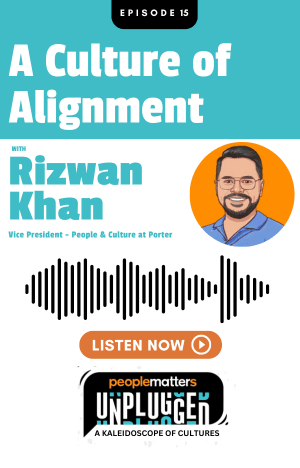COVID-19: Managing talent in times of crisis

2020 has brought in an unprecedented challenge to our personal and professional lives. In corporate context, the year is likely to test the empathy and preparedness of all orgnaizations across the globe in dealing with an unplanned conundrum of balancing employee wellbeing and productivity and the ones ahead of the curve are likely to emerge more successful than the others.
We may argue that the best companies have evolved methods of attaining this mix. Often dubbed as ‘work-life balance’, several industry metrics have quantified which orgnaizations achieve this better than the others. However, the nature of ‘COVID-19’ pandemic, as with any crisis of similar scale, is radically different. It is far more personal and carries a fear of the unknown. And it doesn’t just impact our companies or our clients but also the global community. Everyone is forced to adapt. And corporates have the increased pressure to do it in a way that demonstrates they ‘care’ and “empathise”.
The scale and pace of the spread has proven that companies around the world must act swiftly. Further, given the reasons cited above, the role of the CHRO, business partners and leaders has become pivotal in managing their talent priorities while ensuring business continuity as much as possible. Managing talent here subsumes a much wider scope, beyond the obvious ambits of attracting, retaining, motivating, skilling and development, but with a greater human connotation; ensuring employees and families are safe, engaged and as a unified, productive force.
Managing talent in times of such crisis invariably poses some dichotomies that are centered around unpredictability. Such events as in the current case start very suddenly, and may also end abruptly, but the ongoing adjustments and lasting impact need to be managed. While businesses tend to recover through cycles, talent must be positioned to be productive during and immediately after the phase, as soon as orgnaizations get ready with the immediate crisis behind them.
This gets us to certain underlying talent principles orgnaizations may need to adopt to manage and lead through crisis situations posed by such unforeseen developments. They may be summarised as under:
Set PMO for short term and realign strategy with opportunity in mid-term:
These situations invariably call for important measures to ensure business continuity. While it becomes imperative to ensure your talent has the right tools available at home to stay engaged and collaborated, business requirements may demand a need to rethink policies and orgnaizational designs for the long term. This impact can vary by industry, geography, cash flow and size of operations. In the short term (0-30 days) create a PMO to help navigate the change management. Create a revised strategy plan for the next 6 months with defined outcomes. The philosophy that orgnaizations should use in these situations should be first to make amendments and improvements to existing ways of working and augmenting skills and capabilities to improve business impact in a scalable manner rather than directly going for quantitative optimisation through radical measures. Also, there might be new opportunities that can be leveraged in the short run. Requirements of talent and capability both for the short term and long term would get clear.
Manage collective and individual productivity and performance:
Crisis situations tend to test the robustness of performance management and talent evaluation strategies of the most progressive of orgnaizations. This is largely because business continuity takes a front seat and optimisation and hiring capping usually become automatic reactions due to the fear of unknown. While it is imperative to plan around business directives, orgnaizations are made up of people and it is important to keep a pulse on their alignment since their collective response to a crisis determines how well an orgnaization manages through the difficult and recovery phases. Although focus in crisis remains on collective productivity as a group, orgnaizations also need to adequately differentiate and recognise strong performers that were delivering strong results in the pre-crisis phase else they’re likely to lose them once the market bounces back. It is hence important to ensure that critical talent is managed, assessed, engaged and developed in line with core requirements.
Communicate as a Community:
People leaders drive open communication and trust within teams. Successful orgnaizations typically tend to take the ‘we are in it together’ approach and ensure there is over communication, transparency and adequate depiction of positive vulnerability in these situations especially given remote working scenarios and external dynamics. This helps build a sense of collective ownership, capability building (if possible, depending on severity of the crisis), reassurance and optimism within teams that results in a community approach through the volatile phase. What the PM of India had tried to achieve by “clapping at 5pm” and “Lights off at 9pm” was to achieve the “we are in together goal” as a nation and the orgnaizations can learn from that. These times can also be best used to share stories of inspiration, showcase talent and build family connections with teams in a virtual setting.
Adaptive leadership:
Unanticipated events of this scale pose significant challenges for leaders that need to manage with empathy, navigate business environments, anticipate future course of actions and create innovative win-win solutions. This becomes the foremost, immediate port of call as crisis situations do not come with a technical recipe and always involve dealing with a large share of ambiguity, questions, uncertainty, advance planning and change management. Identify such leaders as a part of your business continuity planning and develop this capability.
Role readjustments and Capability building:
Crisis situations are landscapes of capability building and role realignments. This is usually due to availability of relatively more time and remote collaboration tools. orgnaizations can view these situations as opportunities to revisit core role descriptions and promote greater learning and development opportunities for their talent in context of broader and flexible work roles to align with dynamic priorities of the orgnaization.
While managing talent is always an art and generic principles described above are best applicable in situational context, crisis situations provide windows of opportunity to not only press the reset button on traditional managing styles but also create memories where the overall trust index as an outcome of bonding and collaboration in these times emerges stronger than ever before.














